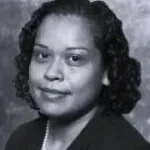Most of my clients are looking for brand-name schools, you know, the ones you see on TV or where everyone’s had a distant cousin, a co-worker, or a neighbor attend. They prefer name recognition, and let’s be honest, parents want to tell their friends that their child is attending ‘that’ school. But the reality is, that not every name-brand school is right for you. In fact, many students can benefit from being in a community where, if confronted with a challenge, they can simultaneously feel supported by the program’s professor, dean, or director. I’m not saying this does not occur at big schools, but if you’re not proactive, you can easily fall into the crowd and really not be noticed. So we have to be honest with ourselves and determine what environment our student, our loved one, our special child, will benefit the most from during these developmental years.

Common Misconceptions about Liberal Arts Colleges
I want to have options for research, internships, clubs, and career opportunities after I graduate. How much can a ‘small’ school offer me?
Let’s address the elephant in the room first: Are all liberal arts schools ‘small’? Many liberal arts schools are small, that is, their student populations range from one to two thousand students. Some are ‘medium size’ with closer to four thousand students, and some are very small with fewer than one thousand students. What does this mean for your learning style? Well, the average class size will be around eighteen students, which means that your professor may know you by name, you will have the opportunity to actively participate in class discussions, ask questions, schedule office hours with the professor, and develop meaningful relationships with your peers.
Will I be able to conduct research? All top liberal arts colleges will tout their resources for students conducting research with faculty members. Yes, this means being mentored by a PhD faculty who has experience publishing, and maybe even receiving funding for your work. Also, creating projects where you have the opportunity to publish, present at professional conferences, or turn it into a start-up or nonprofit. Amherst College in Amherst, MA and Carleton College in Northfield, MN, Davidson College in Davidson, NC, Agnes Scott College, in Decatur, GA and Grinnell College in Grinnell, IA are doing just this with great success.
What about clubs and leadership roles? Well, the math is simple, with fewer students competing, you’ll have less competition for leadership roles. This does not mean fewer clubs or fewer opportunities. It means that you can really develop that role and have a stronger impact in your community. Pomona College, in Claremont, CA, Hamilton College in Clinton, NY, and Scripps College in Claremont, CA all have fewer than two thousand students and boast two hundred or more student clubs.
Aren’t all liberal arts colleges located in rural towns? While many are in small towns often known as college towns, such as Kalamazoo College in Kalamazoo, MI, many are also located in suburban areas such as Bryn Mawr College in Bryn Mawr, PA, some in urban settings such as Macalester College, in St. Paul, MN, and Spelman College, in Atlanta, GA. Whether in a small town or suburb, liberal arts colleges have developed close working relationships with many companies offering opportunities for internships, summer research, work shadow experiences, and the opportunity to gain ‘hands-on’ experience in the field.
I have to complete all of these ‘core requirements,’ why? Core requirements are designed to help you be a stronger student and citizen of the world. As a scientist you will be a strong writer, communicating your breakthroughs to a wide audience, as a mathematician, you will be able to speak a second language and find real-world applications for your ideas, as a politician you would be able to understand the history and experiences of your diverse constituents, as an artist, you would be able to equally contribute to a lab experiment as well as show the world new perspectives. Core requirements expose you to new ways of thinking and seeing the world which can only help you be a better CEO, engineer, doctor, lawyer, teacher, actor, and human being.
What makes a liberal arts school so special?
Attending a liberal arts school means you can explore your academic interests, learn from others, pursue one to two majors, minors, and/or concentrations, study abroad, serve on student government, find practical ways to apply what you are learning in the classroom in the real world, research with a faculty, play in the orchestra, perform on stage, found a start-up, and so much more! You can do all of this while feeling supported with access to the right resources such as writing centers, career offices, and a range of student support services.
Many alumni from liberal arts colleges go on to have very successful careers in all types of fields from past presidents and politicians to CEOs of all types of companies including tech and start-ups to health care and entertainment. They are also famous actors/musicians/artists/writers, doctors, and ambassadors. Yes, most alumni who attended the best liberal arts schools do go on to earn graduate degrees and lead very successful careers.
If you would like to discuss your options for college and determine which type of school may be the most beneficial for you, then contact us today.

Former Associate Director of Admissions at MIT
Former Associate Director of Admissions at Macalester College
Former Assistant Director of Admissions at Macalester College
Former Admissions Counselor at St. Olaf College
3 Years in MIT Admissions
9 Years in Macalester Admissions
4 Years in St. Olaf Admissions
20,000+ Applications Read and Evaluated
Philana earned her Bachelor’s degree from St. Olaf College and Master’s degrees from St. Mary’s University in Minnesota. With over 16 years in admissions, she has a track record of building relationships, creating accessible education policies, and increasing diversity in student bodies.



